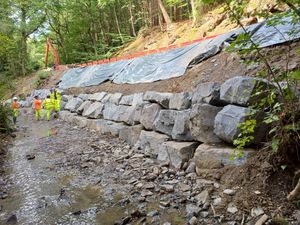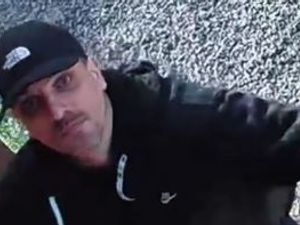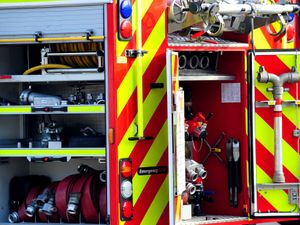From Shropshire to Australia - and the nightmare of the devastating wildfires
A former Shropshire Star reporter who now lives in Australia tells how the wildfires have affected her adopted nation.
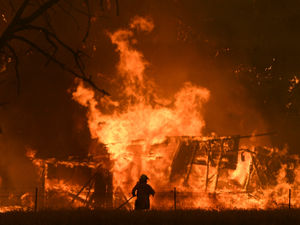
Megan Norris, a journalist and crime writer, returned to Shrewsbury to spend Christmas with her parents and is now on her way back home, fearing what she will return to.
In her own words she tells of how the fire affect her adopted nation.
"As Australia sweltered through the first days of summer amidst warnings that the coming bushfire season would be the worst in the country's fiery history, we flew out to the UK for what we hoped would be our first white Christmas in almost thirty years.
While our apartment on Queensland's Gold Coast is out of harm’s way, our panoramic view over the Pacific Ocean had been obscured for days by smoke from fires inland.
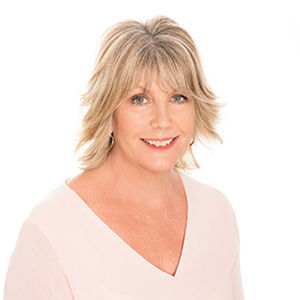
Weeks earlier, our grandson’s school camp in the nearby Gold Coast Hinterland had been forced to evacuate when a large blaze began racing towards them. While the frightened group returned safely home, in the blistering days that followed other Australians were not as fortunate.
Looking down on the smoke as our plane climbed into the clouds heading to the UK I was filled with a deep sense of foreboding. We were only a week into summer and the country we had called home for nearly 30 years was combusting
Ironically, the rain Australia had been praying for awaited us in England where we drove past waterlogged fields towards our childhood home in Shrewsbury for a wet, not white, Christmas.
The horrors unfolding in Australia began making headlines on the world news, the worst natural disaster since post European settlement. My heart ached as I watched the harrowing footage of ordinary Australian families fleeing burning homes to seek refuge on beaches with their traumatised children and pets, deafened by the agonising shrieks of koalas burning in the flames behind them.
My fears for Australia are now my worst nightmare.
Sadly, I have first-hand experience about the catastrophic impact of out of control bush fires.
For more than 20 years, I lived and worked in the Dandenong Ranges, a picturesque mountain region in Victoria widely recognised as one of the most dangerous bush fire communities on earth.
Many of our neighbours were members of the local fire brigades.
Our first experience of bush fire was in the early 1990s when an out of control blaze on the NSW Central coast raced towards the Kuringai State Forest north of Sydney where our family was camping.
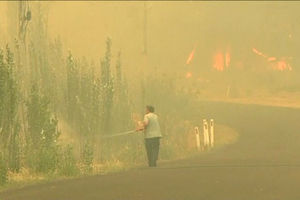
Panicking, we joined the drove of tourists who evacuated, racing in our car down the Pacific Highway as trees burned beneath the fly overs and a surreal orange sun burned above us in a blood red sky.
But this was nothing compared to the horrors of February 2009 when monster fires swept through Victoria, claiming 173 lives and destroying thousands of homes.
A combination of factors prevailed on a day since coined Black Saturday. Hundreds of fires were burning around the state that Saturday, and when the escalating 14km wind blew the power lines down in Central Victoria, an even bigger blaze erupted which tore across our state, obliterating townships and raining hot embers onto the wine-growing region of the Yarra Valley.
While our brigades were on high alert and many locals had already evacuated, a sudden wind change sent the flames in a different direction and the inferno swept over neighbouring townships including Kinglake, destroying hundreds of homes and claiming countless lives.
I worked on what was the most distressing and confronting stories of my career.
At the emergency evacuation centres, the traumatised survivors gave harrowing accounts of the inferno which had roared through their towns like a jet plane. They wept as they described the casualties and the suffering.
But amongst the heartache other stories emerged about miraculous survival, and acts of heroism and compassion.
When the emergency services opened the roads to the fire-ravaged areas I drove with a photographer to the most ghostly silence.
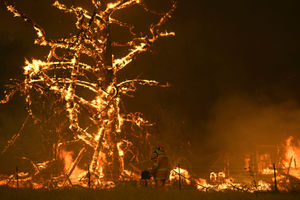
The birds had stopped singing and the rolling green vineyards of the Yarra Valley had been transformed into a smouldering grey landscape where burned out gums towered from the ash like stark pencils. Homes had been reduced to piles of smouldering debris, their tin roofs mangled by the intense heat of the inferno. The devastation was random, and amongst the carnage other homes remained untouched and blackened laundry still flapping on wilting washing lines.
I wrote story after story, shedding tears as I typed, incredibly guilty that our own town had survived when others had lost so much.
I have never forgotten the stench of death.
I spent the days following the fires with schoolchildren who had lost homes, pets and friends and they drew me pictures of the things they were too traumatised to verbalise. The drawings revealed more than words ever could – most depicting leaping flames and exploding cars, almost all showing blackened chimney stacks on ashen landscapes which was all that remained of their family homes.
"The images were syndicated world-wide as a symbol of Australia's enduring loss."
A year after Black Saturday I returned to the fire-affected region where the rebuilding effort was underway.
Post traumatic stress was widespread and survivors spoke about numbing painful memories with drugs, alcohol and prescription medication. Many suffered depression or other mental health issues and countless people still bore the physical injuries they had suffered as they fled the inferno.
Interestingly, while women found it comforting to share their heartache, men could not revisit it and there was an overwhelming sense of hopelessness and despair. Women wanted to stay and rebuild – their partners wanted to leave, and for everyone there was fear and anxiety about the future.
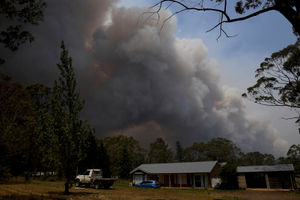
Relationships crumbled and as communities disintegrated, suicides increased. Many reported a rise in physical health issues like cancers and respiratory illnesses which were directly linked to the fires.
Many survivors left the stricken region after Black Saturday.
And in December 2014 as another bush fire season approached, we swapped the bush for the beach and moved to Queensland.
Until now, the Black Saturday fires were the worst natural disaster in contemporary Australian history. But the current bush fires which have burned for months are on an unprecedented scale and are ravaging our vast nation
What frightens me most is that Australia’s bushfire season is just gearing up and as the country braces itself for dangerous days ahead, more homes will be lost, the casualties will soar and the toll on human lives and our native wildlife is impossible to determine.
At the end of last year's bushfire season, Australian fire chiefs urged the Government to meet to discuss the worsening crisis. They were ignored. A few months ago, they demanded to meet again, and again they were ignored.
The images of injured wildlife that have filled our screens over the past weeks have provoked harrowing memories of what I saw and heard in 2009, so I cannot imagine what horrors they have been unearthed for those still suffering post trauma and living with loss.
My dreams are now with the agonising screams of little koalas perishing in flames, as I picture again a fire ravaged apocalyptic landscape devoid of animals and life.
I am afraid for Australia and a planet that grows hotter every day."



